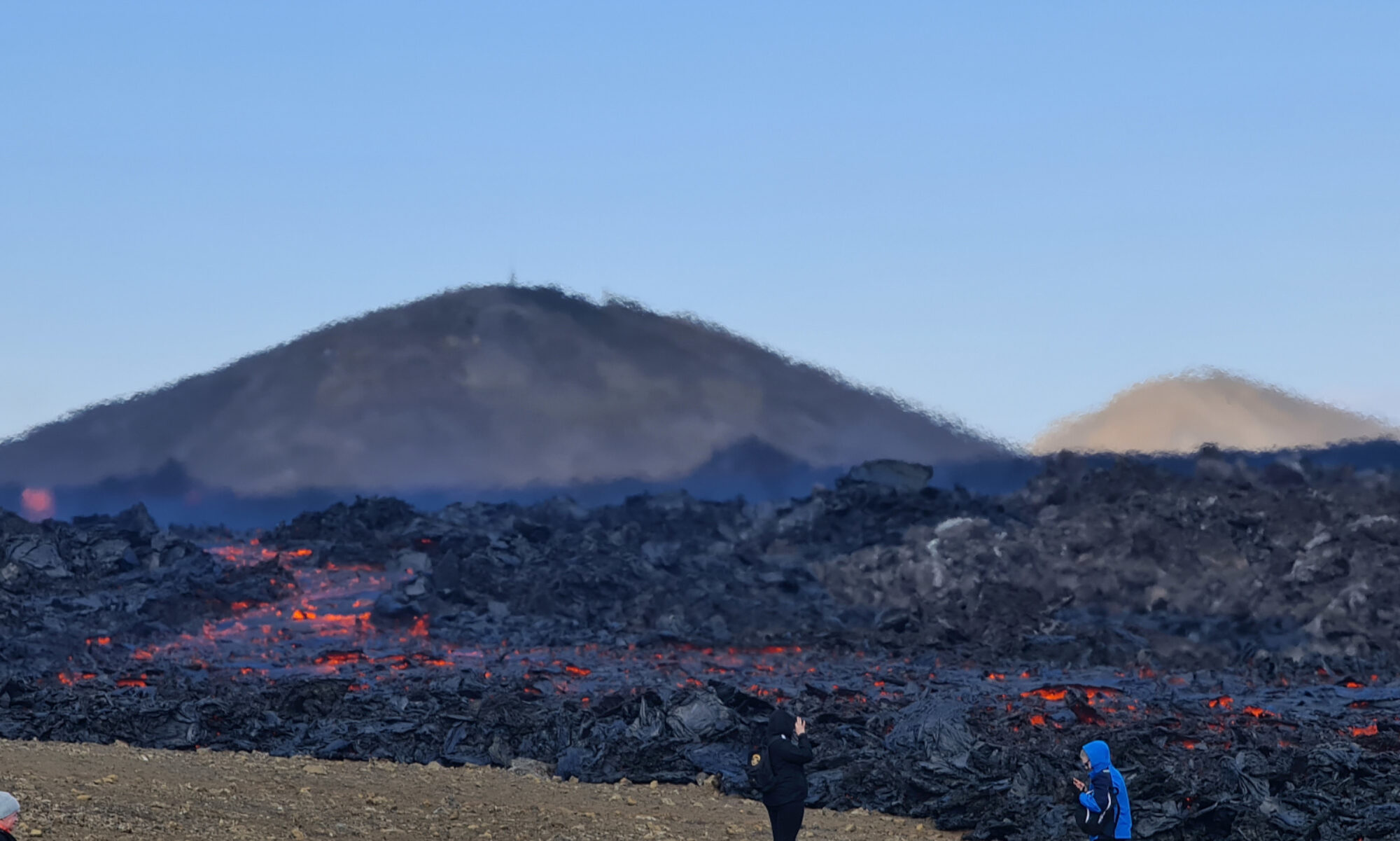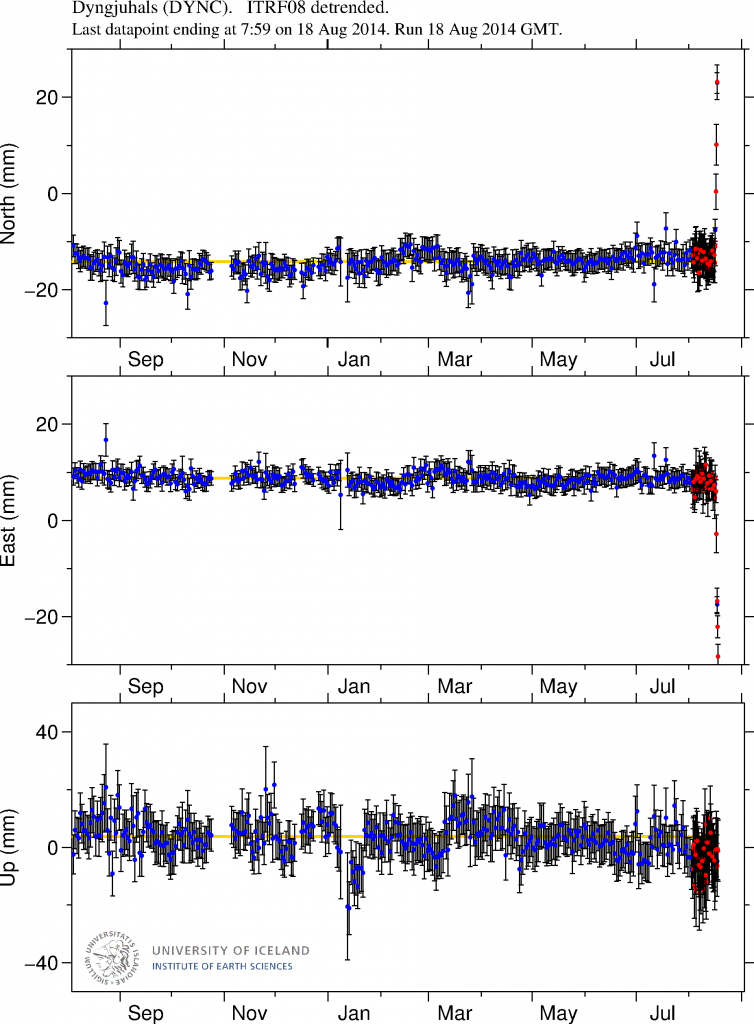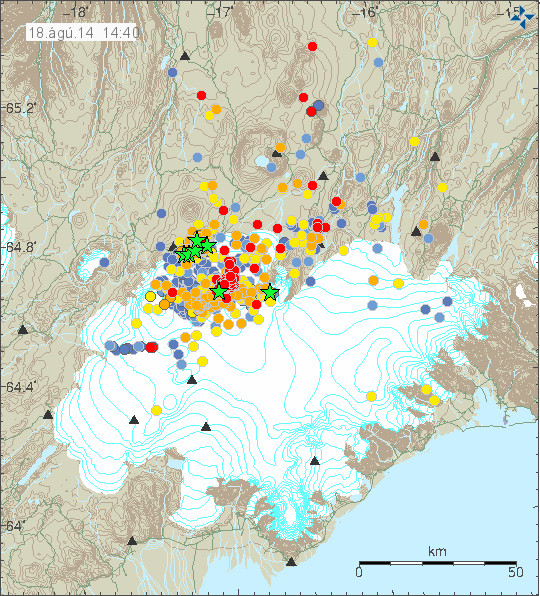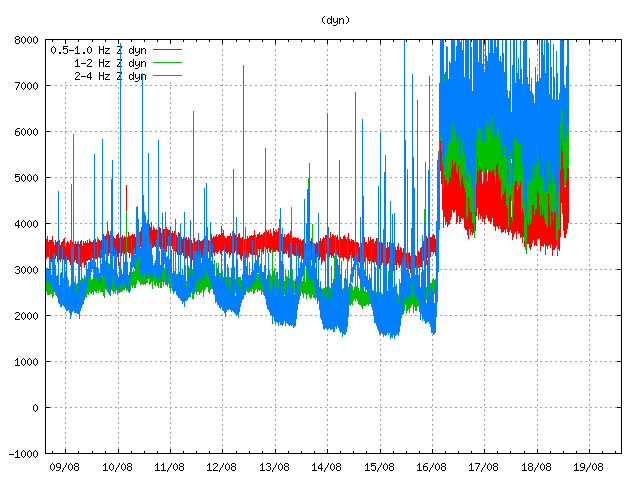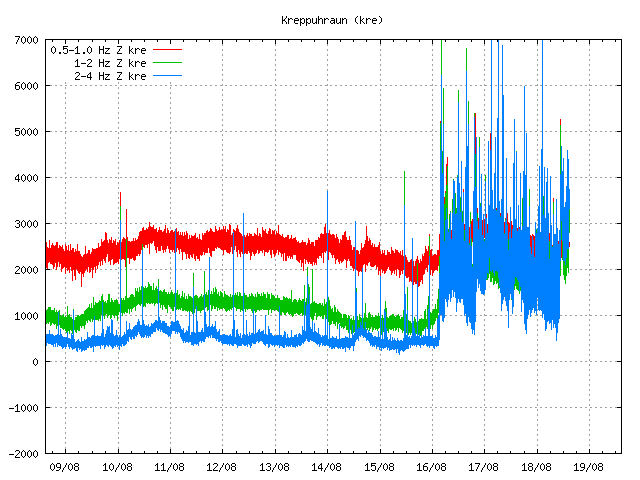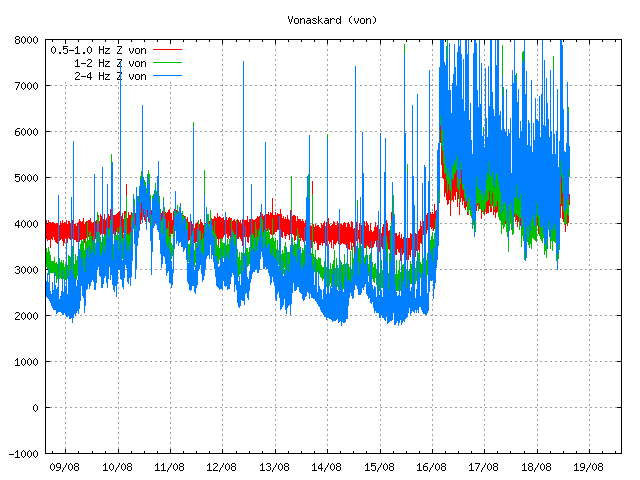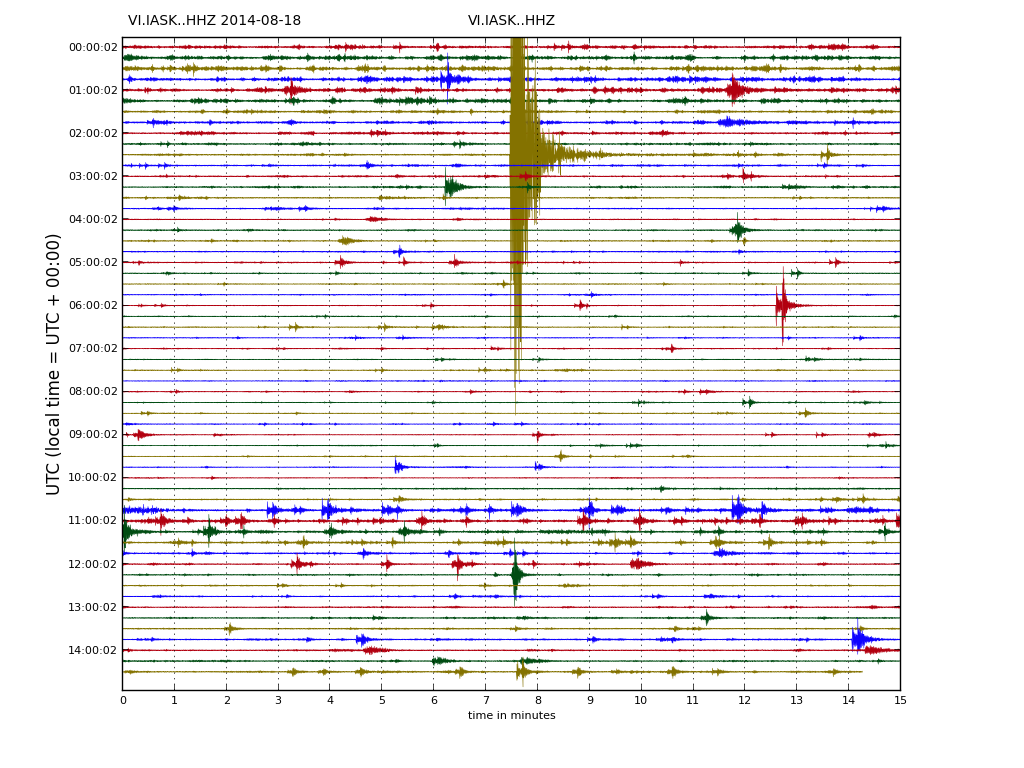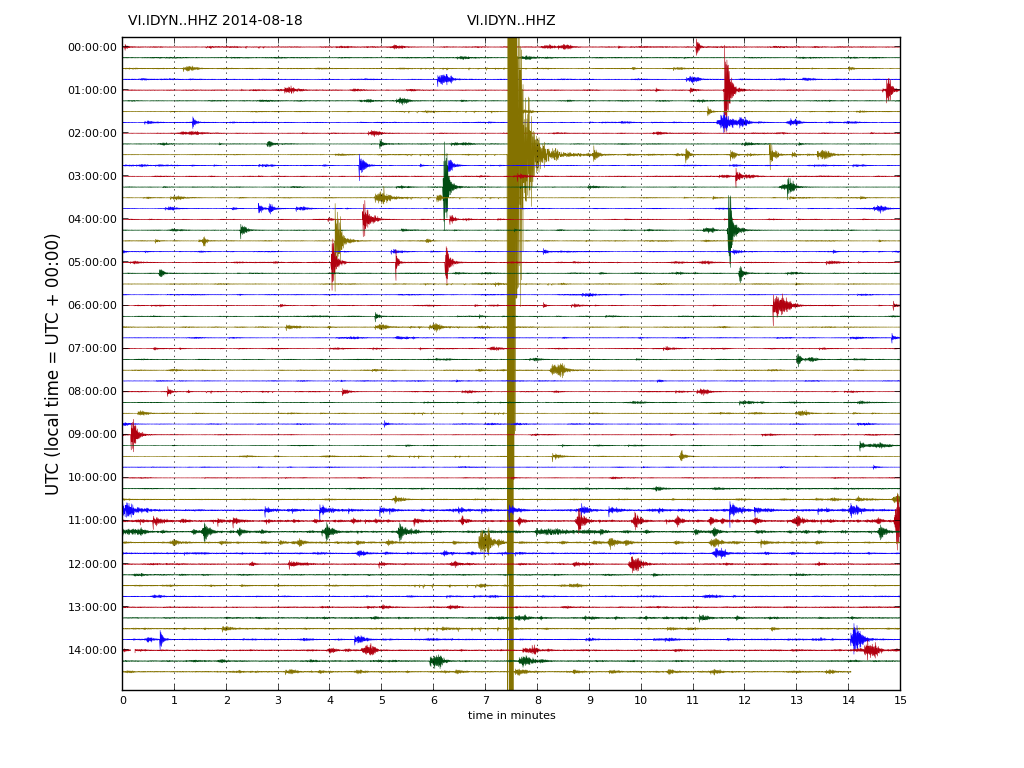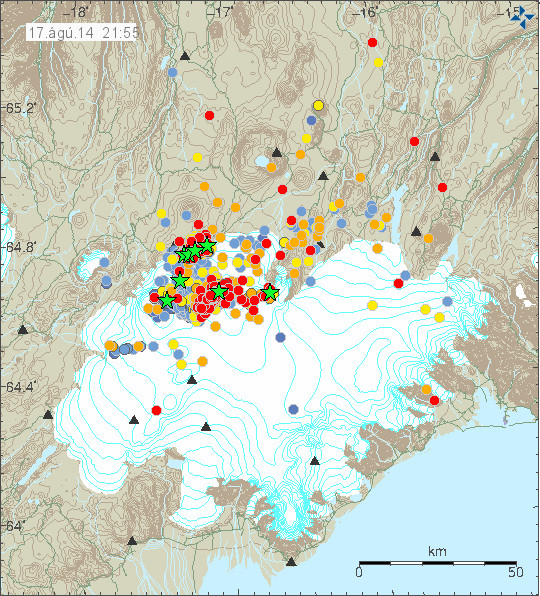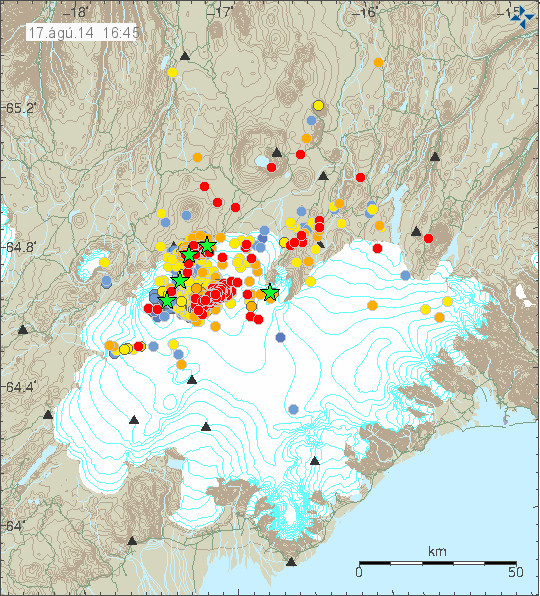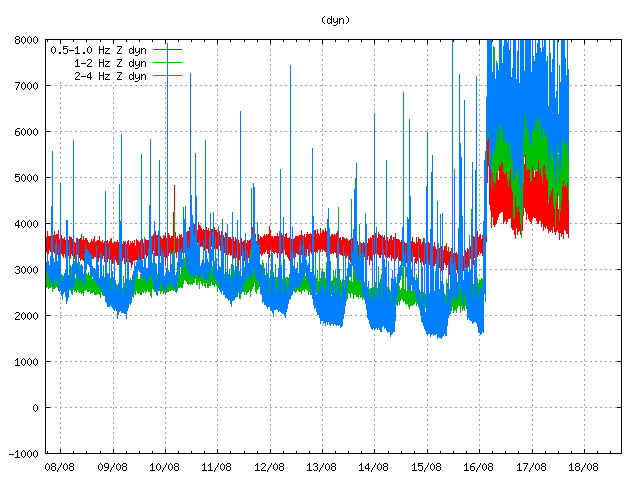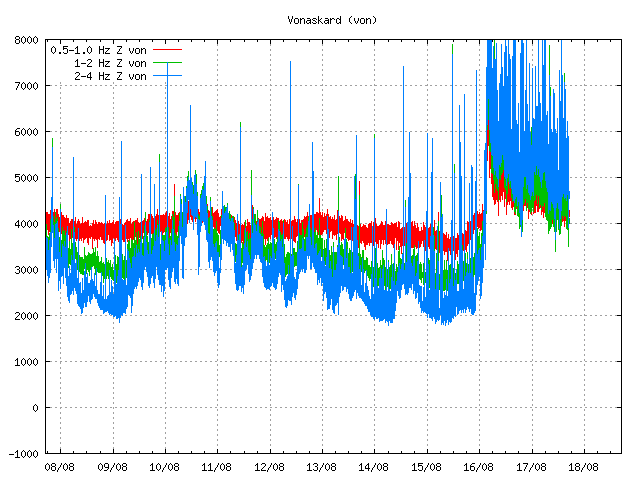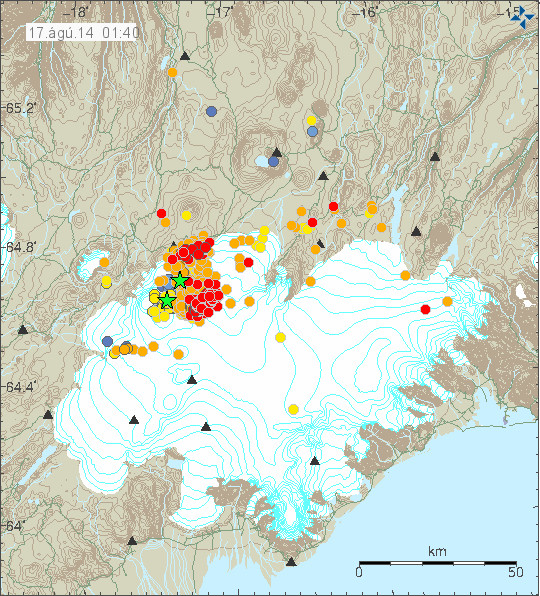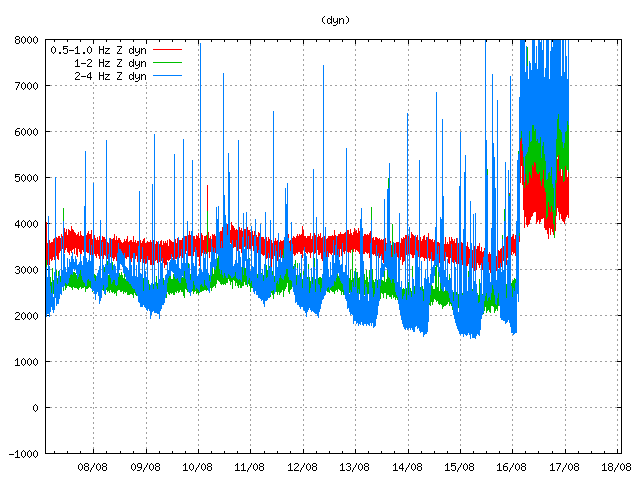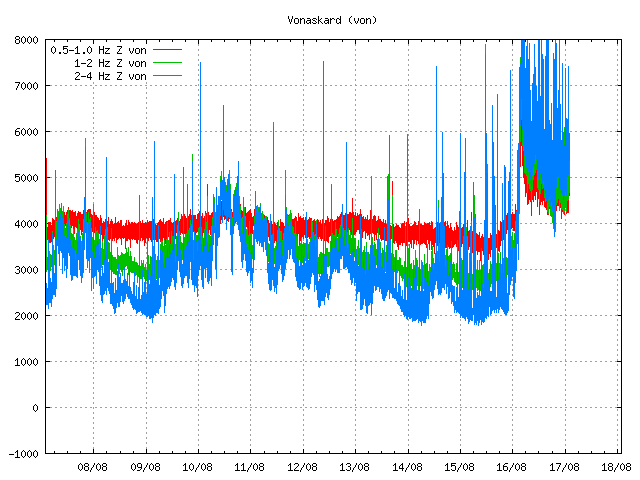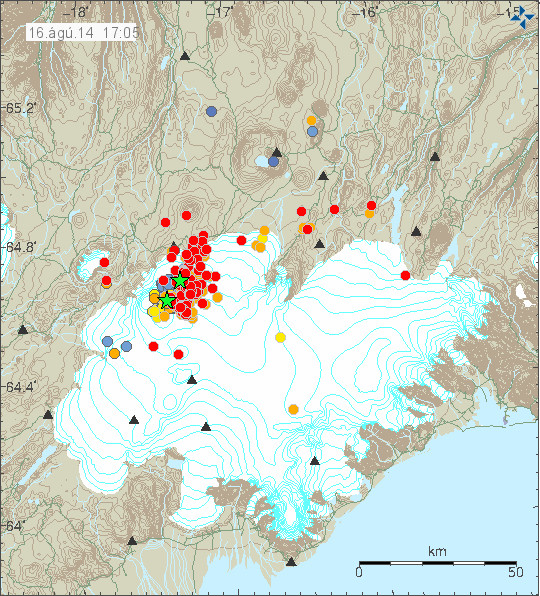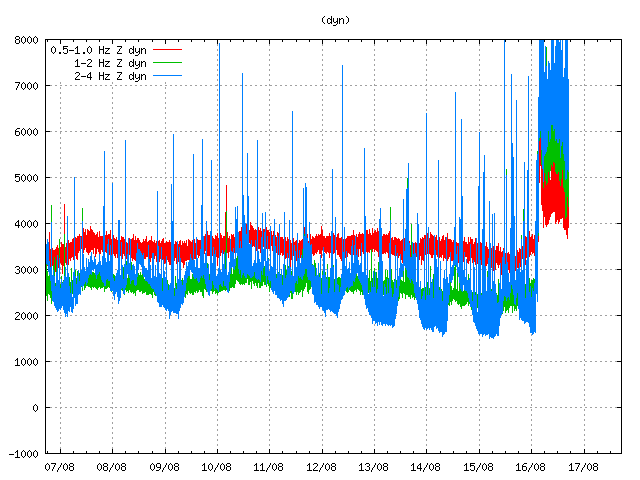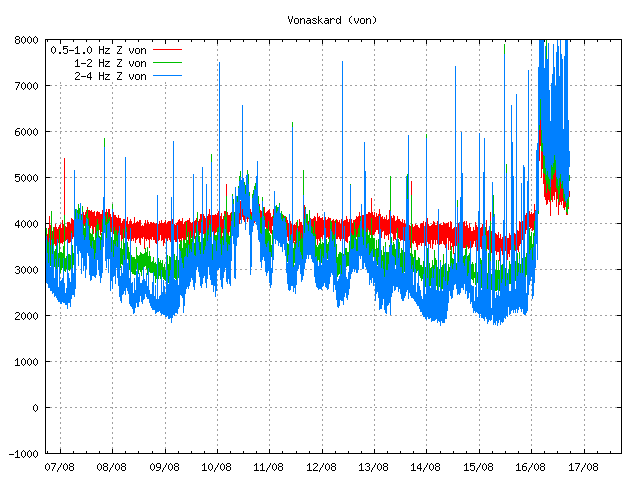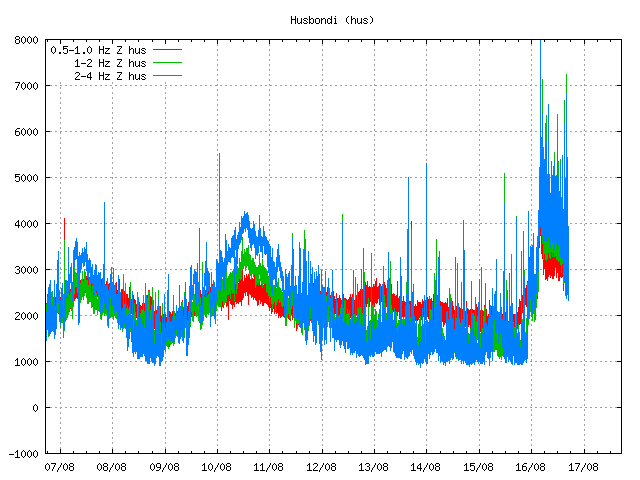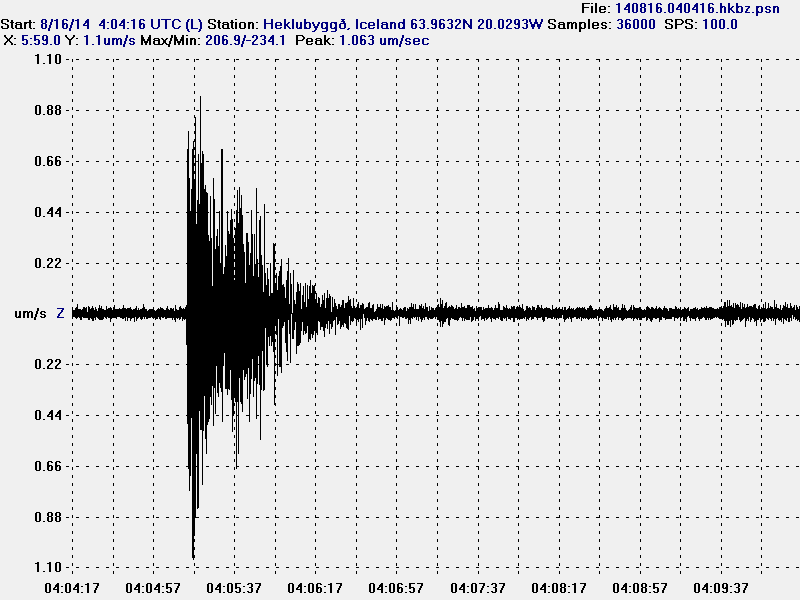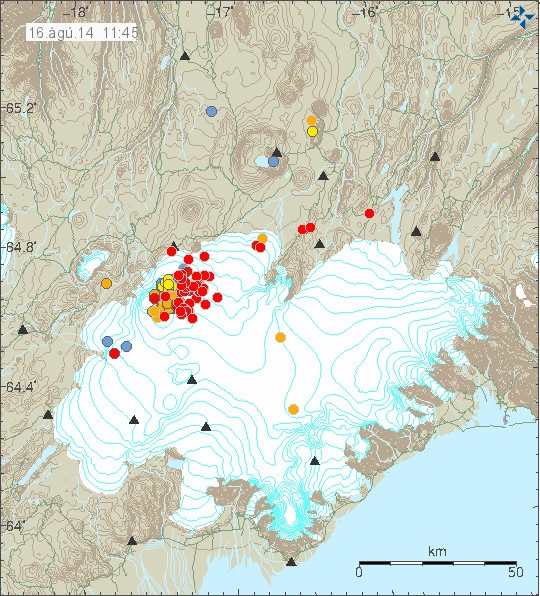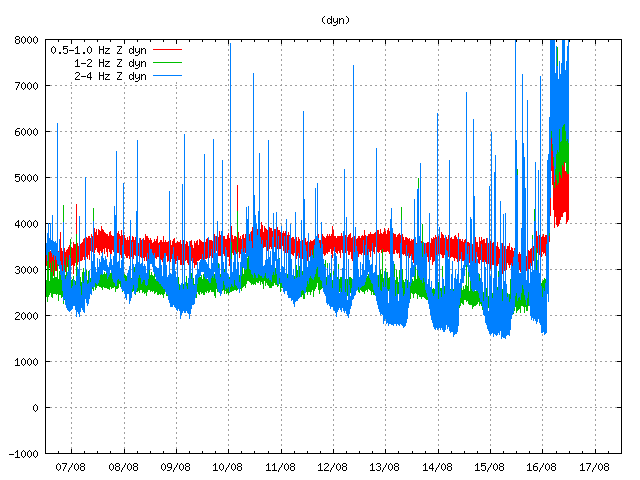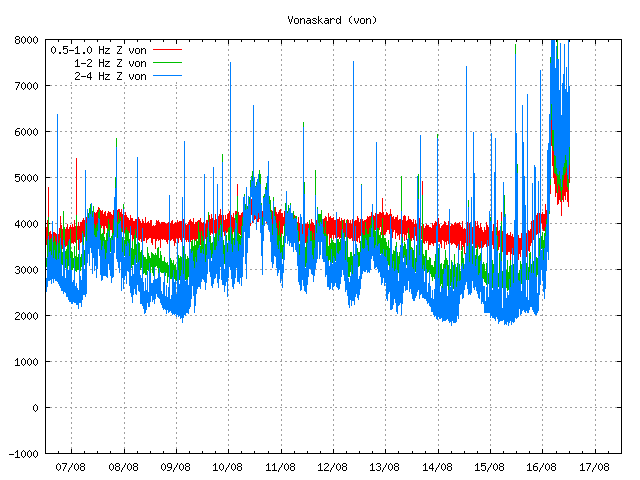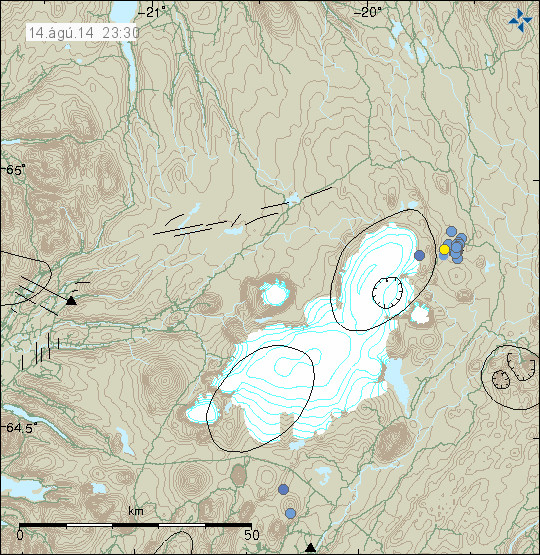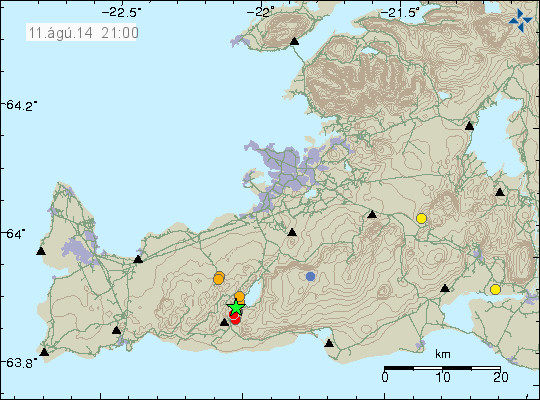This is a short update on Bárðarbunga volcano activity.
Little has changed since yesterday (18-August-2014) in Bárðarbunga volcano. Earthquake activity has been moving east and north-east since yesterday but continues at same rate as before. It is not clear why that is, but is getting close to Kverkfjöll volcano, but at the moment the earthquake swarm is inside a fissure swarm that belongs to Bárðarbunga volcano. I do not know what happens if magma from Bárðarbunga volcano gets into contact with magma in Kverkfjöll volcano.
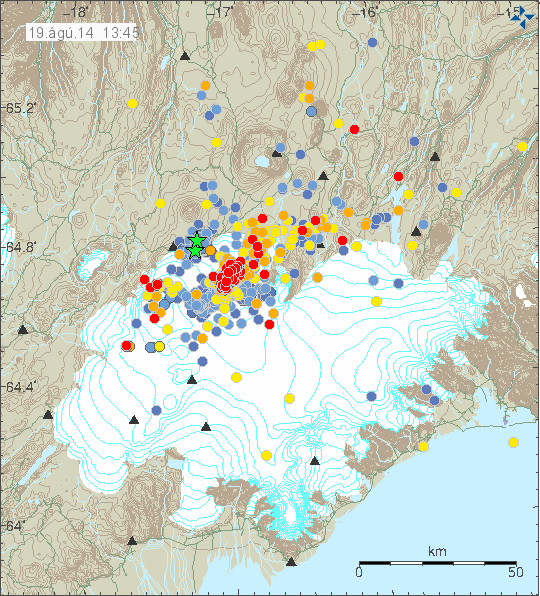
Earthquake activity in Bárðarbunga volcano during the past 48 hours. During the past 24 hours (when this is written) no earthquake has had magnitude above 3,0. Copyright of image belongs to Icelandic Met Office.

Earthquake activity remains heavy in Bárðarbunga volcano. Copyright of image belongs to Icelandic Met Office.
No major earthquake has taken place during the past 24 hours (when this is written). This means that no earthquake so far has reached the magnitude above 3,0.
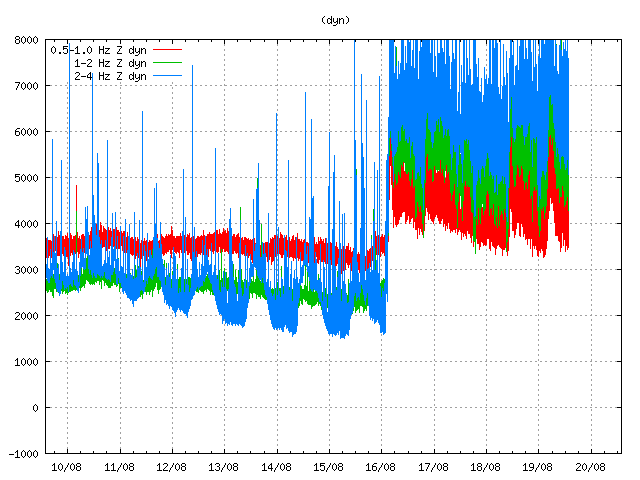
Harmonic tremor remains high in Bárðarbunga volcano, even if there is no eruption taking place at the moment. Copyright of image belongs to Icelandic Met Office.
The harmonic tremor clearly shows the pulse activity that is taking place in Bárðarbunga volcano, when the earthquake activity drops, so does the tremor. When the harmonic tremor increases, earthquake activity increases soon after it. Sometimes earthquake activity increases before an increase in the harmonic tremor takes place.
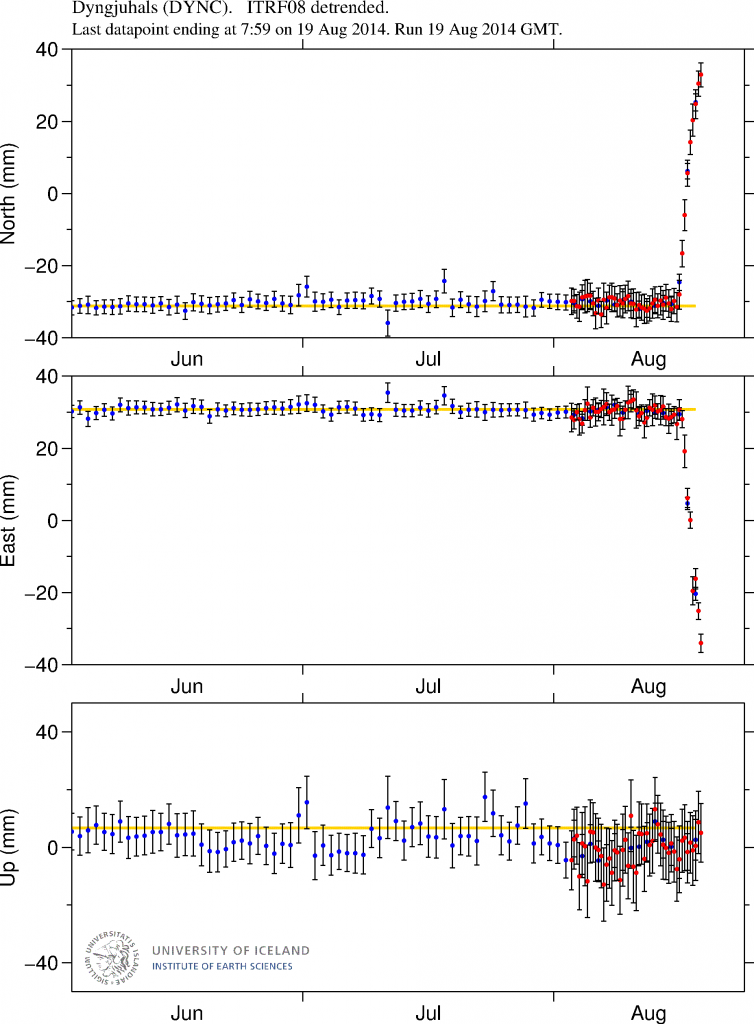
GPS data from University of Iceland clearly shows the amount of magma that is flowing into Bárðarbunga volcano system at the moment. More plots can be found here. Copyright of this image belongs to University of Iceland.
The GPS data shows how fast this inflation now is. This data is just for few days. I am expecting more inflation to take place in the next few days. How much inflation is needed before an eruption starts I do not know.
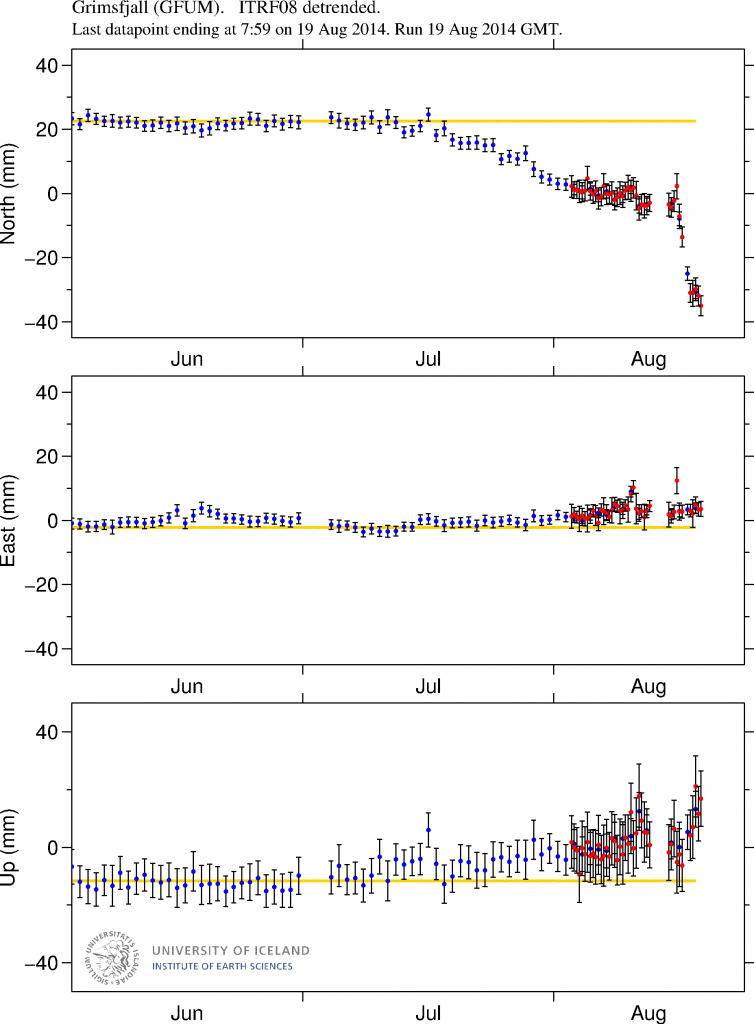
Same pattern of change can be seen in GPS data on Grímsfjall volcano. More plots can be found here. Copyright of this image belongs to University of Iceland.
There are no signs of this activity stopping. When this is going to results in an eruption I do not know. For people looking for web cameras of Bárðarbunga volcano, a new web camera has now been set-up by Míla communication company in Iceland. It sends out live from Bárðarbunga volcano (as close they can get to it). The web camera can be viewed here.
